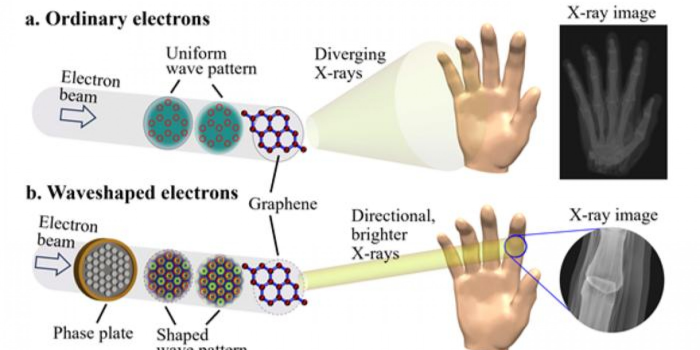In a breakthrough discovery, a team of scientists has unveiled a novel X-ray generation method that can potentially revolutionize various industries. By employing electron waveshaping, this innovative approach promises to produce highly focused and intensely powerful X-rays energy-efficiently, surpassing the limitations of traditional methods such as X-ray tubes.
(Electron waveshaping involves manipulating the wave of electrons to gain precise control over the properties of X-rays. The team employed a specially designed plate to shape electron wavefronts, allowing meticulous control over the characteristics of the generated X-ray beam. By aligning the path of electrons with the structured positions of material atoms, this method resulted in X-rays with significantly higher intensities, offering directional control as needed.
To overcome challenges posed by diffused X-rays emitted during collisions with material atoms, the scientists utilized a “phase plate” device. This device simulated electrons on an ultra-thin graphene material, amplifying the probability of collisions and subsequently increasing radiation intensity. The flexibility of this method enables X-rays to be emitted in various directions or focused in a specific direction, offering versatility for future X-ray-generating devices.

Led by Nanyang Assistant Professor Wong Liang Jie from NTU’s School of Electrical and Electronic Engineering, the research involves collaboration with institutions such as the Singapore University of Technology and Design, Stanford University, Technion–Israel Institute of Technology, Tel Aviv University, and the University of California, Los Angeles.
This groundbreaking discovery holds immense potential across multiple fields. It could lead to more precise and detailed imaging in the medical sector, aiding in early disease detection and facilitating focused treatment plans. The controllable nature of X-rays through electron waveshaping also enhances radiation therapy, improving the effectiveness of cancer treatments.
Beyond healthcare, industries conducting non-destructive testing benefit from this advancement, enabling more precise and efficient inspection of components, thereby ensuring higher quality and enhanced safety standards.
Assistant Professor Wong emphasized the importance of precision in electron waveshaping for generated X-rays, envisioning its full implementation in intense and highly tunable table-top X-ray technology. This significant advancement signifies a promising future for X-ray generation technology.


